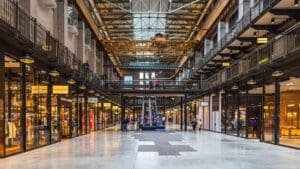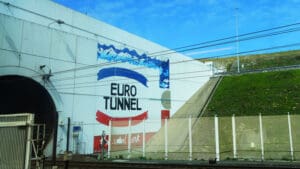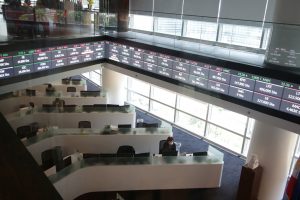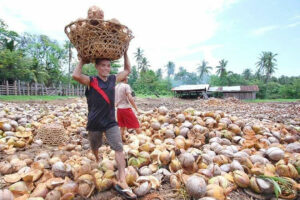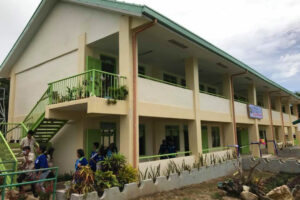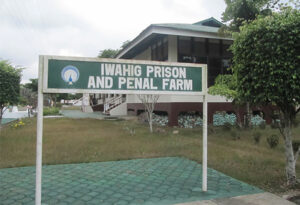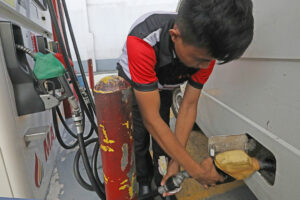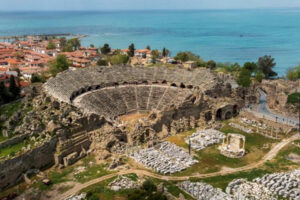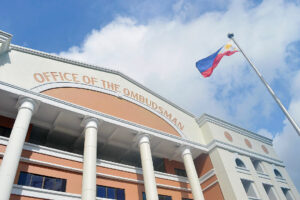1 of 5
By Anna Isabel C. Sobrepeña
THE WINDOW framed the blush of a new day as the plane descended into Istanbul. Returning to Türkiye for a fourth time did not diminish the enigma and romance of the only country nestled between two continents. Instead, mystery and enchantment were heightened as the itinerary covered a route through a modern skyline into an epoch intimating humanity’s shared past.
Our guide, Huseyin Demir, factored in the transcontinental landmass that contributed to the rich history and cultural heritage. About 3% of Türkiye is located in southeastern Europe while 97% is geographically part of Asia. Waterways separate the small East Thracé or European side from the peninsula of Anatolia which is located in Asia. It was access to these bodies of water as well as the Mediterranean and Aegean seas which supported the development of settlements in the fertile lands. This peninsular country linked Europe and Asia, and even Africa, thereby becoming a crossroads for trade, technologies, and an exchange of cultures.
Besides being a natural resource, the Turkish straits of the Bosporus and Dardanelles were advantageous for naval power. Empires were established and cities flourished. Ruins in Urla, Denizli, Burdur, Antalya, and Side are silent vestiges of the greatness that once was.
ROSE OILS AND TEASIt was a little over an hour by plane from Istanbul to Izmir, one of the oldest prehistoric cities that flourished through the centuries and remains a thriving metropolis. This was apparent upon arrival at the Izmir Adnan Menderes International Airport, a modern structure with vaulted roofs, indoor gardens, and natural lighting. The facility served 11.5 million passengers in 2024 and has direct rail transit to the urban center.
The scenery along the way was no different from other places in Europe. It was only when we were taken to Konak, a municipality in Izmir, that it felt like we were in Türkiye. The Kemeralti district where the locals go for their everyday requirements, was lined with shops selling apparel, food, jewelry, rose oils, teas, soap, and houseware. Despite the 14-hour travel time (layover not included), the adrenaline kicked in for a shopping spree. It was, however, the perfect appetite stimulant to the amazing meal that followed.
CULTURE IN A CUPThe Ayşa Boşnak Börekçisi restaurant is tucked in an alley inside the Kemeralti bazaar and offers a tantalizing spread of hot and cold food in the tradition of Bosnian and Ottoman cuisine. Cited in the Michelin guide, the cuisine is a gastronomic experience of home-cooking style. Aysa, the chef-owner, who wears the toque and traditional chef’s white jacket with the Michelin insignia sewn on, explained through an interpreter that the stew served that day was slow cooked using Ottoman ingredients. Many of the dishes stirred in a fusion of Mediterranean and Middle Eastern flavors simmered in their own juices. Turkish food draws largely from its Ottoman heritage, among others, an intertwining of cultures, rituals, and traditions.
One thing that is distinctly Türkiye is Turkish coffee. It was just a short walk to another alley lined with coffee shops. Once settled in Emel Café, the proprietor gave us an education on the art of making the after-meal beverage. Coffee is not grown in Türkiye. Instead, high quality arabica beans are sourced from Central and South America. These are blended and roasted together before being made into a fine ground. A portion is spooned into a cezve, a small metal cup with a handle, where water proportioned to the coffee is poured. This is the point where sugar is added for those who prefer a sweet drink. It is not added after the brew has been boiled. The cezve is placed over a low fire till a foam rises. Once the foam covers the top, the coffee is poured into a small cup that captures the foam. It is served with a glass of water and a Turkish delight.
ANCIENT EXPLORATIONWhile food is always an interesting way to get to know a country’s culture, the Izmir Culture and Arts Factory provided a deeper insight into Türkiye’s past. The museum, which was a tobacco factory since 1884, enshrines the history of a nation in archeological and ethnographic exhibitions, paintings, and sculpture in halls within the 20,000-square-meter complex. When the facility ceased tobacco production in 2004, the Ministry of Culture and Tourism repurposed the industrial heritage facility into a modern museum with libraries and venues for art workshops and events. It holds an impressive collection of artifacts, carvings, fabric, jewelry, and statues from centuries ago.
While these were impressive testaments to the early civilizations that thrived in the region, visiting the ancient cities themselves was nothing less than phenomenal and astounding.
The ancient Phrygian city of Hierapolis, now known as Pamukkale, is a UNESCO World Heritage site that dates back to 190 BCE. Greco-Roman imprints mark the ruins of what was once a sacred city. It survived until 1334 when it was destroyed by an earthquake and abandoned by the survivors. Archeological work in 1957 uncovered vestiges of temples, baths, and Greek structures, with a theater as the main monument of the site. Restoration work continues to this day with excavations and methodical studies providing evidence of past glories.
Adjacent to the ruins is a series of terraced basins known as the travertines. Mineral-rich water from hot springs created white rock formations over a thousand years as it cooled on the surface. This natural phenomenon is a popular attraction with visitors wading in the flowing water.
Perge in Antalya was another antique city on our itinerary. We walked under the arched entrance of a Roman gate into a city known as a center for trade. The main attraction was the agora where social life and mercantile activity took place. Daily life happened amidst colonnaded streets and mosaic floors, evidence of the elevated Roman sensibilities. There were baths for cleansing and socializing, and a stadium for sports and entertainment such as gladiator fights.
STORY OF THE ANCIENT STONESIt was, however, among the ruins in Side that allowed a more reflective visit to the past. Running behind schedule and arriving past closing time, Huseyin put in a call that gained us entry at the golden hour. The outdoor museum was practically ours alone. Excavations had unearthed a cultural melting pot of a Hellenic populace living under Roman rule. The combination of Greek artistry and planning with Roman construction skills built a city with a monumental fountain, Roman aqueducts, an odeon, a great bath, streets lined with towering columns and mosaic floors that have remained intact through the centuries.
A setting sun cast an ethereal glow over the landscape of ancient stones. Inscriptions and drawings on marble and limestone told stories of life thousands of years ago. These were remnants of a past yet standing in the midst of what was once Greco-Roman splendor, I wondered if I was looking at our future. No matter how advanced the ancient civilizations had been, all that remains of them now are these stones. Could it be our fate as well?

